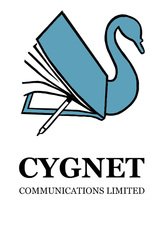|
My company Cygnet Communications Limited was first registered in Hong Kong back in 2003. On registering the new company, I had to choose a name for it -- but what to call it? Being a Westerner, I didn't favour the Chinese style of naming companies with auspicious words -- like Rich & Fame Ltd, or Gold Abundance Investment Ltd, or Wealth Ahead Ltd, or Prosperity Creation Ltd (all of these are real existing or former companies registered in Hong Kong). If I had had a more practical mind, perhaps I would have selected a company name that gave people some idea of what my business did -- for example, English Language Ltd (already taken). Why then did I name my company Cygnet Communications Limited? Obviously the word 'communications' captures the idea of English communication, which is related to the services we offer. But Cygnet? -- it's an English word and means a young swan. Swans, in case you haven't seen one, are magnificent river birds found widely across Europe. The picture below shows a swan, but it also shows three cygnets -- young swans that have not yet reached maturity. Cygnets are cute, but I didn't really want an image of cuteness for my company. That's why, despite the 'Cygnet' name, I decided to opt for the more impressive image of a full-grown swan when designing a company logo. Originally, I borrowed an old wood engraving by one of my favourite artists, Thomas Bewick, first published 200 years ago, and used it on our letterheads, quotations and invoices. However, a couple of years ago I decided to change the wood engraving, mainly because it didn't show up well on letterheads and quotations. It also looked a bit old-fashioned, and I wanted my company to portray a more modern and dynamic image. I decided that I still wanted to use an image of a swan, so I commissioned my daughter, a talented artist, to design an alternative for me. Here is the final result: I was pleased with this design for the way that it cleverly merges the swan image with the image of a notebook and pen, representing the writing work we do at Cygnet. The splash of colour also gives the image extra body and vitality, I think.
How is 'Cygnet' pronounced? One of the problems I soon discovered after choosing 'Cygnet' for my company name was that many Hong Kong people are uncertain about how to pronounce it! At the time, I didn't take into account the fact that the English spelling of 'cygnet' is unusual, and this makes it difficult for Hong Kong people who are unfamiliar with this uncommon word. Specifically, many are unsure how to pronounce the initial 'c' (is it /k/ as in 'cat' or /s/ as in 'cinema'?), and also how to pronounce the vowel sound represented by the 'y' (is it a short sound like the 'y' in 'typical', or a long sound like the 'y' in 'fly'?). To make thing easier, it helps to know that 'Cygnet' is pronounced exactly the same as the English word 'signet' -- in fact, one of the reasons I chose Cygnet for my company name was because it sounded like 'signet', a word that refers to making a copy of something and is related to the word 'sign'. If you are still unsure about its pronunciation, I suggest you take the easy way out and pronounce it the same way as you pronounce the name of the Australian city Sydney -- 悉尼. Close enough!
0 Comments
Your comment will be posted after it is approved.
Leave a Reply. |
About this blogThis blog arises from keeping an eye on English in Hong Kong. I often use signs, notices and advertisements that I see as starting points to write about English issues that commonly challenge Hong Kong writers. Archives
October 2017
Categories
All
|




 RSS Feed
RSS Feed